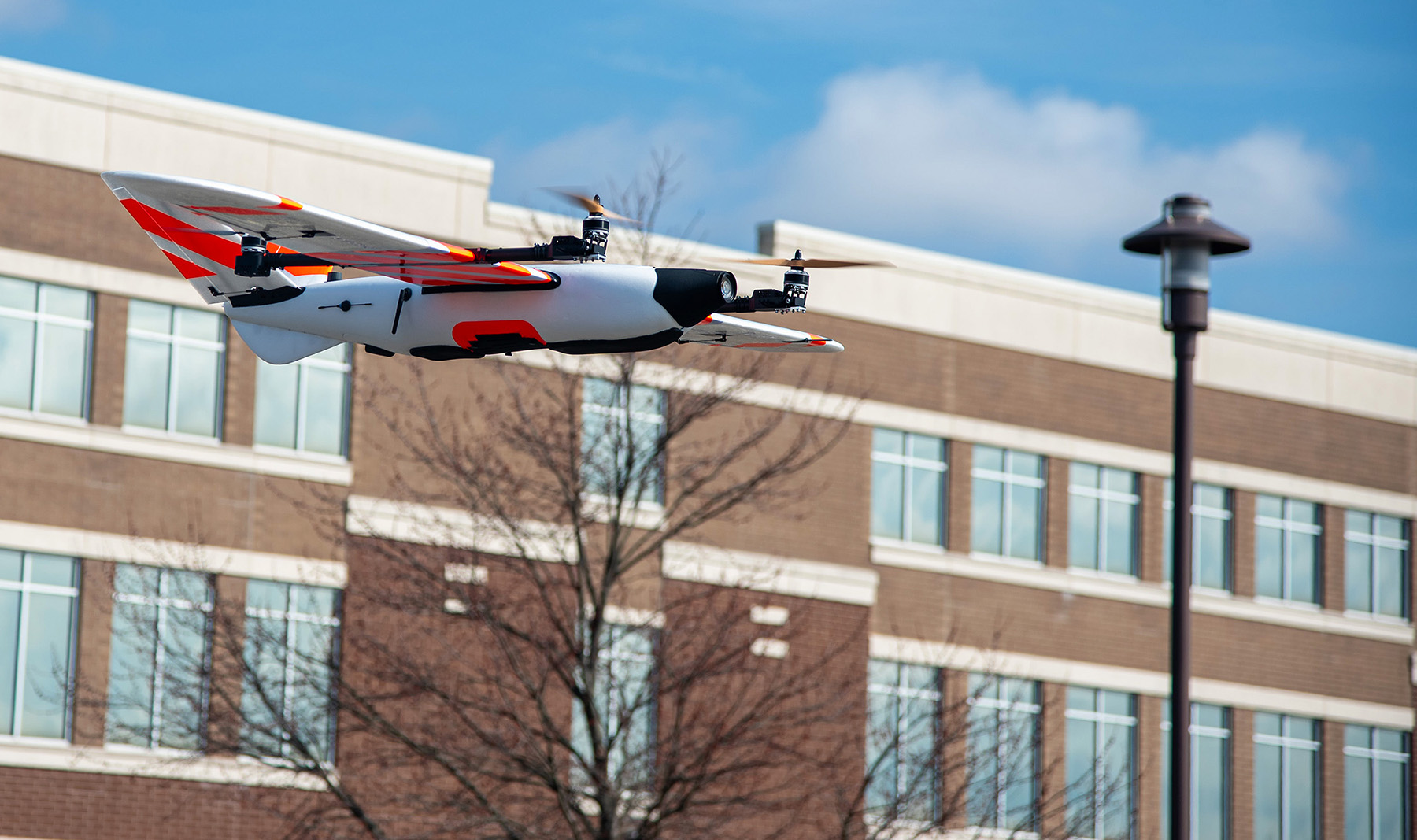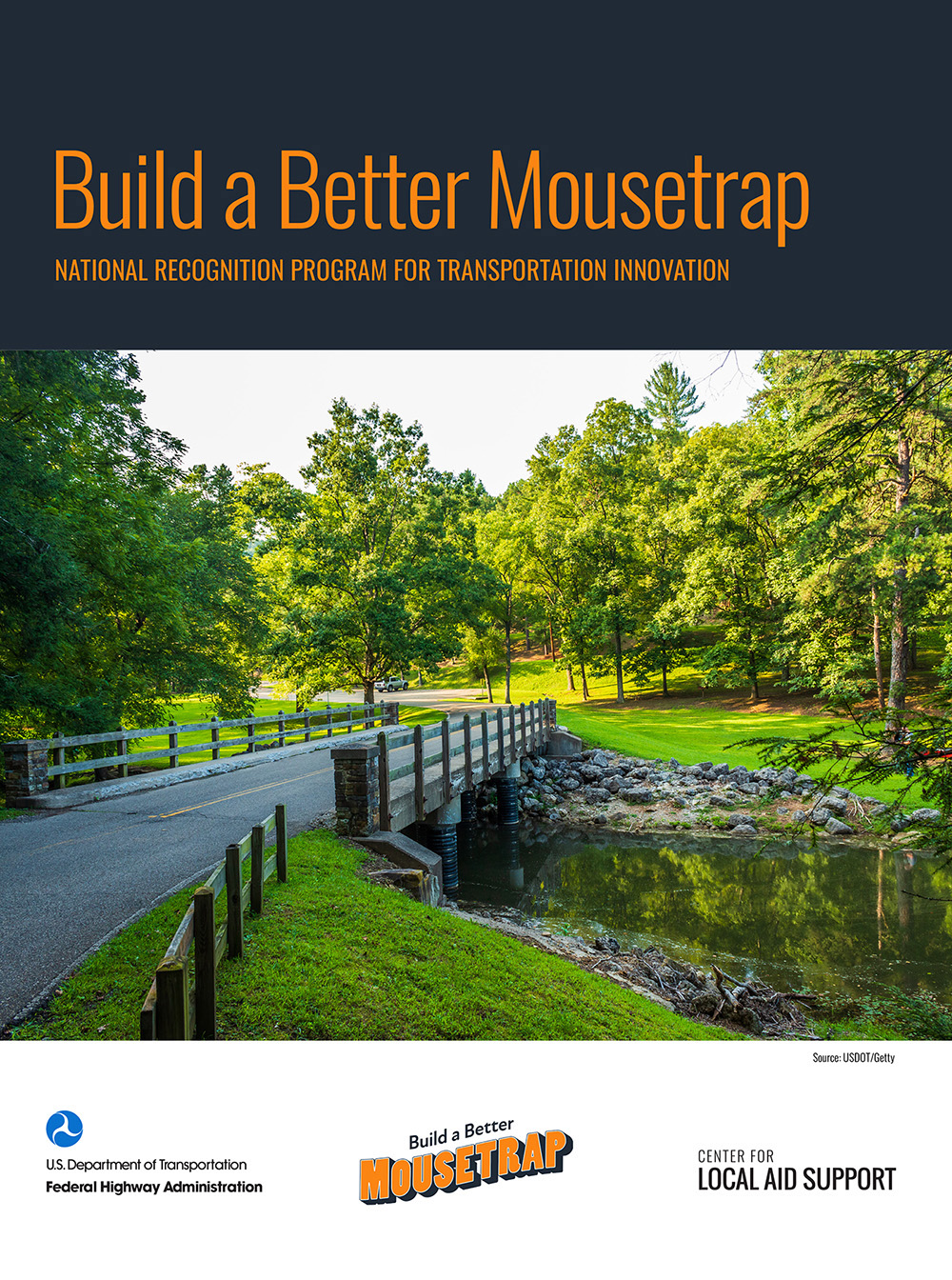
States Innovate!
Federal Lands Highway Expedites Bridge Deck Repairs with Ultra-High Performance Concrete
As part of the North Parkway Rehabilitation project in Washington D.C., FHWA’s Office of Federal Lands Highway (FLH) needed to replace existing deck overlays to extend service life on two bridges along the George Washington Memorial Parkway while keeping the roadway open. According to the project website, the northern section of the parkway, which was originally completed in 1962, has never undergone major rehabilitation and is the busiest section of parkway, serving about 26 million drivers annually. FLH chose to use ultra-high performance concrete (UHPC) as the overlay treatment for the deck repair to provide durability and avoid lengthy shutdowns due to its quicker curing time than conventional concretes. Learn more in the January 2024 issue of the FHWA R&T Now newsletter.

The Ohio DOT recently received approval from the Federal Aviation Administration to fly a large unmanned aerial system over a portion of highway near Columbus.
Credit: Ohio Department of TransportationOhio Tests Advanced Unmanned Aerial Systems Operations
The Ohio Department of Transportation’s (ODOT’s) Uncrewed Aircraft Systems Center recently received approval from the Federal Aviation Administration (FAA) to test advanced unmanned aerial system (UAS) operations over a portion of the U.S. 33 corridor northwest of Columbus. FAA permission was needed to operate the UAS beyond the pilot’s sight, known as beyond visual line of sight (BVLOS) operations. ODOT reported that the FAA approval is valid for 4 years and will help facilitate integration of live drone footage to its Traffic Management Center. The tests on U.S. 33 will help determine the benefit of replicating this approach statewide to aid emergency response and traffic monitoring.
Tennessee Promotes Planning and Environmental Linkages
The Tennessee Department of Transportation (TDOT) hosted a virtual public engagement event during April to introduce a Planning and Environmental Linkages (PEL) Study on its Downtown Nashville Interstate Corridors project. TDOT is using the collaborative PEL approach to determine strategies for relieving congestion on the interstate network leading into and surrounding downtown Nashville. Due to the size and diversity of the corridor, the agency kicked off the PEL study with a 30-day virtual event to encourage public involvement and provide a convenient way to learn about the study objectives, see existing conditions within the study corridor, and provide feedback prior to a public information meeting planned for later this year.
Oklahoma Adds Diverging Diamond Interchange
A major intersection improvement project at the Interstate 35-State Highway 9W interchange near Norman, OK, will result in the State’s third diverging diamond interchange (DDI). The Oklahoma Department of Transportation (ODOT) is also adding two roundabouts on the State Highway 9W service roads. ODOT’s news release noted that DDIs create safer, less congested intersections that allow for fewer conflict points, give drivers better sight distance at turns, provide shorter pedestrian crossings, and make wrong-way entry to ramps extremely difficult.
Pennsylvania Progresses with CHANGE
During Every Day Counts rounds four and five, the Collaborative Hydraulics: Advancing to the Next Generation of Engineering (CHANGE) initiative promoted next-generation hydraulic tools that can improve understanding of complex interactions between river or coastal environments and transportation assets, particularly two-dimensional (2D) modeling and graphical visualization features.
The Pennsylvania Department of Transportation (PennDOT) has continued advancing CHANGE on a variety of bridge projects across the State. In December, PennDOT provided an update on four bridge projects in various stages of completion that incorporated 2D modeling. The article noted that extreme weather events place added pressure on designers to incorporate better resiliency into infrastructure, and 2D modeling helps provide infrastructure engineers with valuable, verifiable data to support design decisions. Find out more on the PennDOT Way blog.

Nominations Open for Build a Better Mousetrap
FHWA is currently taking nominations for the 2024 Build a Better Mousetrap national recognition program. Build a Better Mousetrap recognizes State and local government and Tribal agencies that use homegrown innovations to improve safety in their transportation programs. Many of these ideas come from frontline workers who are looking for better ways to get the job done while saving money and time and improving efficiency.
Last year’s Build a Better Mousetrap highlighted 53 innovations that can be found in the 2023 entries booklet. Winning innovations included a road diet to preserve a historic bridge, a mobile sensing unit to improve rural road safety, software to improve maintenance of traffic signals, and solar-powered remote cameras for monitoring road conditions during winter storms.
Agencies must contact their State’s Local Technical Assistance Program (LTAP) Center or regional Tribal Technical Assistance Program (TTAP) Center for more information and assistance on the application. Nominations are due to FHWA by June 7, 2024. View the 2024 Build a Better Mousetrap Planning Guide to learn more.
Disclaimer: The U.S. Government does not endorse products or manufacturers. Trademarks or manufacturers’ names appear in this document only because they are considered essential to the objective of the document. They are included for informational purposes only and are not intended to reflect a preference, approval, or endorsement of any one product or entity.
Except for the statutes and regulations cited, the contents of this document do not have the force and effect of law and are not meant to bind the States or the public in any way. This document is intended only to provide information regarding existing requirements under the law or agency policies.
Recommended Citation: U.S. Department of Transportation, Federal Highway Administration - Washington, DC (2024) Innovator Newsletter, May/June 2024, Volume 17 (102). https://doi.org/10.21949/1521779
- Cover
- New Opportunities for Building Bridges Better: The Evolution of UHPC
- Reconnecting Communities and Neighborhoods
- Brighter is Not Better: Emergency Vehicle Lighting Gets “Smart”
- Unlocking UAS Data: Strategies for Effective Management and Collaboration
- States Innovate
- EDC Outtakes: Next-Generation TIM
- About Innovator



